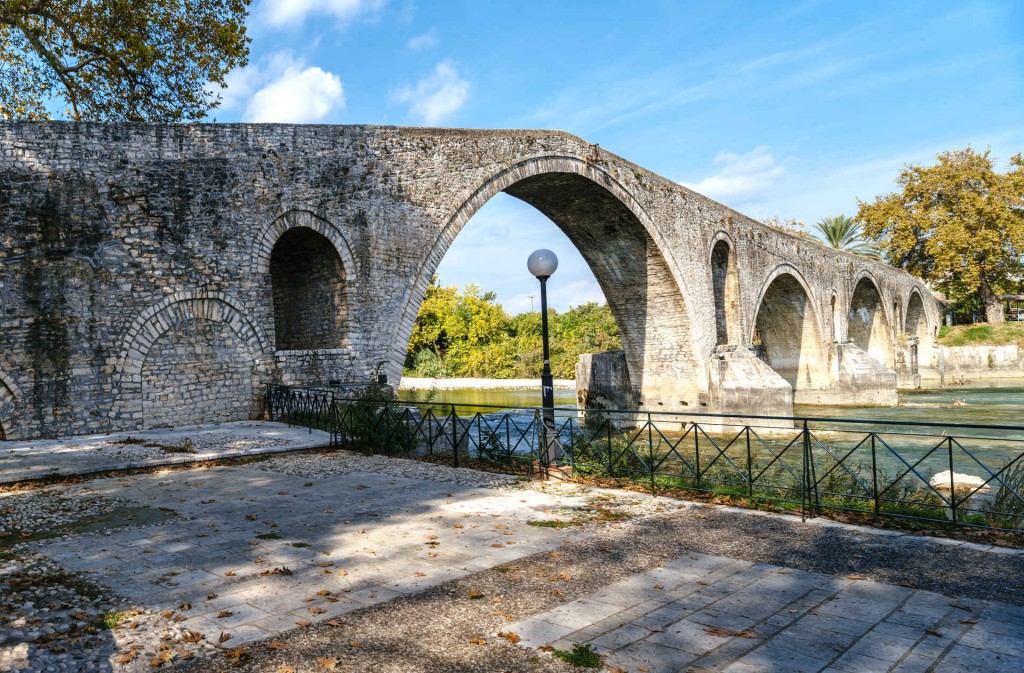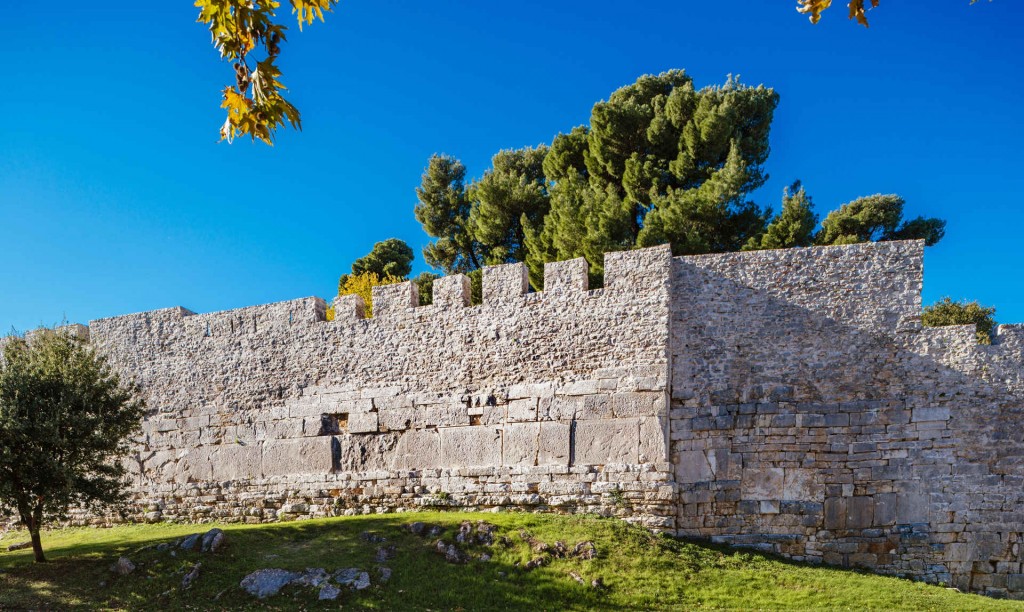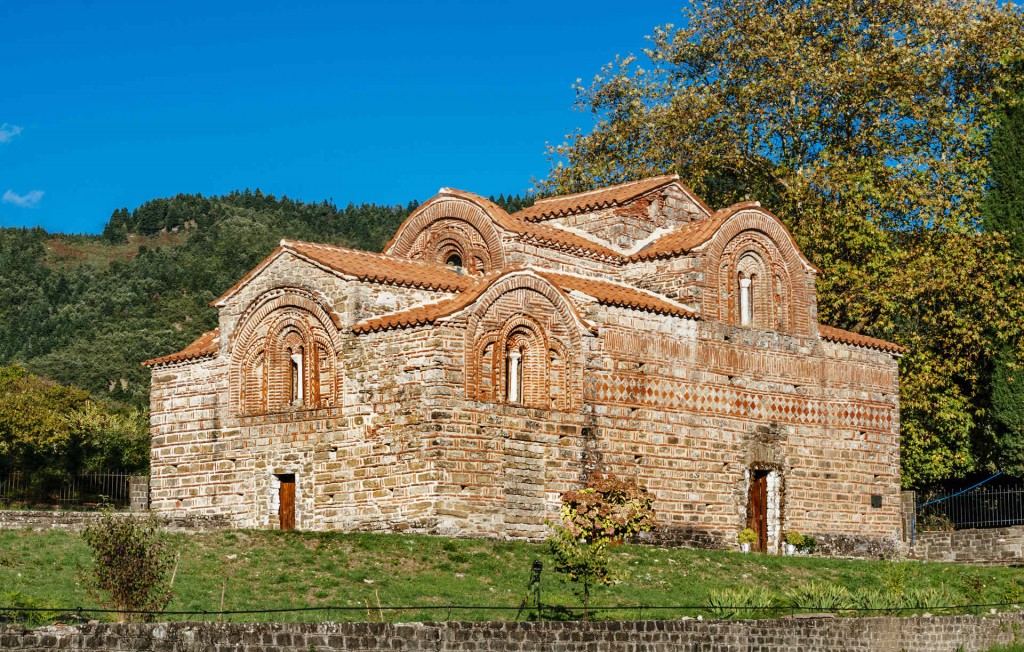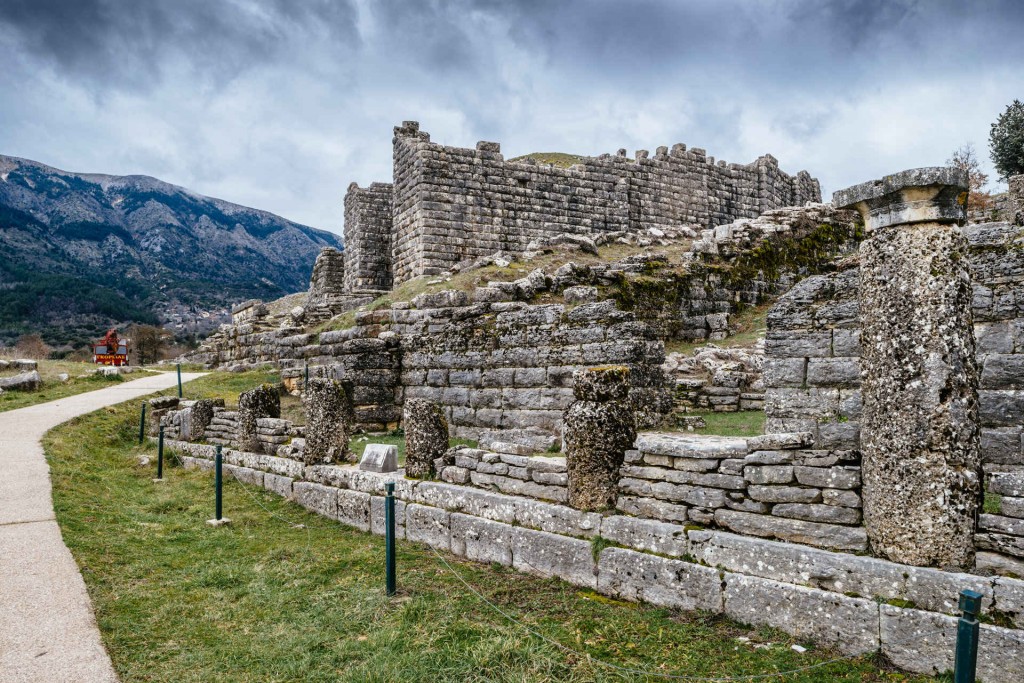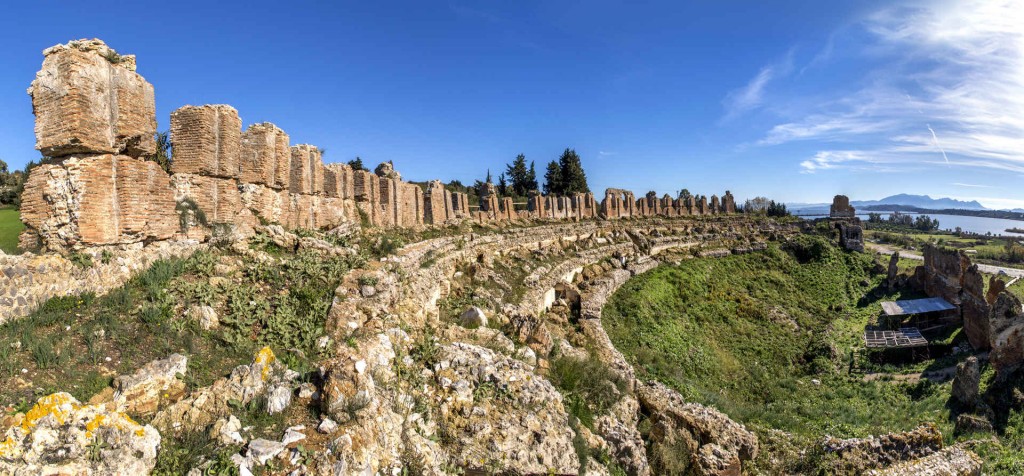It is a true architectural masterpiece, by some unknown but great architect.
It lies in the center of the city, on the western side of the wall, adjacent to the Roman agora.
It was used for lectures, literary and musical contests and theatrical performances during the Nea Aktia religious games honouring Apollo.
It was built during the reign of Augustus (early 1st century AD) and frequently remodelled and repaired in the late 2nd – early 3rd centuries AD.
The Odeon consisted of the cavea, the orchestra and the scene.
The cavea contained 19 rows of seats and was divided into two sections by a small horizontal central corridor. On the tenth row of the seats, there were small openings in favour of acoustics.
Three semicircular porticos, of different heights, support the cavea and ensure its sloping tendency.
The semicircular orchestra was adorned with multicoloured marble works, parts of which are still preserved.
Between the scene proper and the proscenium there is a deep and narrow corridor. This is “the flute of the setting”, which served to raise the curtain at every theatrical performance.





